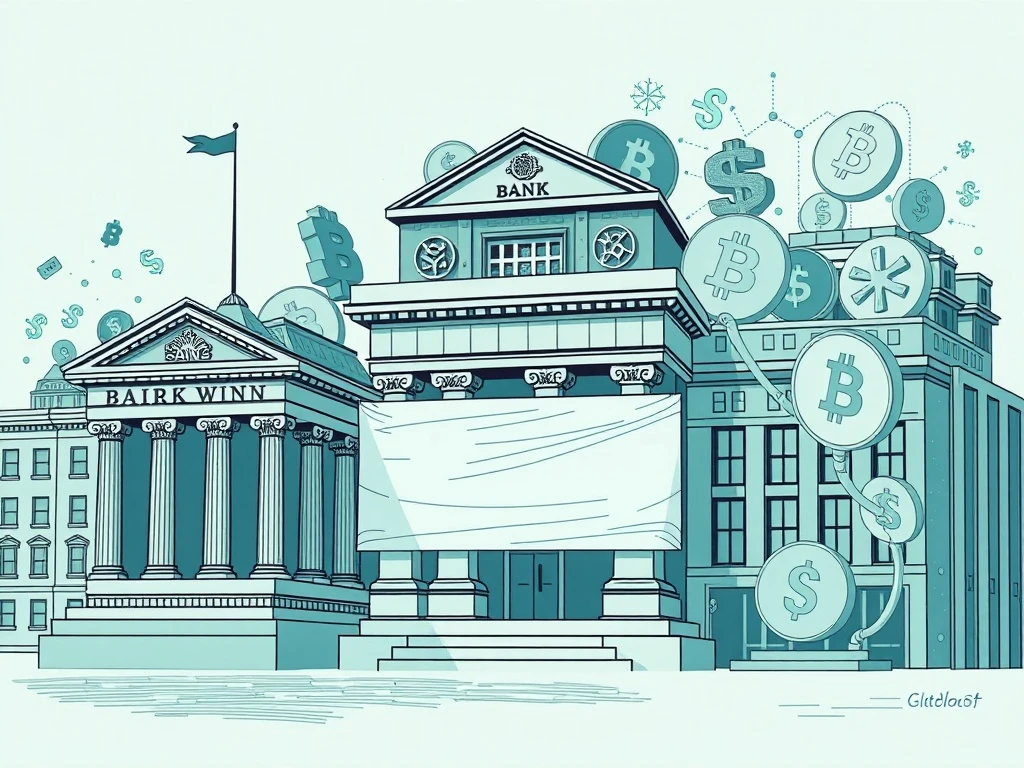Basel Bank Rules Threaten Crypto Growth: Investment Exec Warns of ‘Chokepoint’

Are traditional financial regulations stifling the booming digital asset market? According to a prominent investment executive, new **Basel Bank Rules** are creating a significant ‘chokepoint’ for the crypto industry. This deliberate design makes holding cryptocurrencies too costly for banks. Consequently, it severely limits the sector’s potential growth and widespread adoption.
Understanding the Basel Bank Rules and Their Impact
The Basel Committee on Banking Supervision (BCBS) crafts global banking standards. Their current capital reserve requirements present a substantial barrier for financial institutions. Chris Perkins, president of investment firm CoinFund, explains these rules act as a “chokepoint.” They effectively throttle the growth of the crypto industry.
Moreover, the stringent capital rules significantly lower a bank’s **Return on Equity (ROE)**. ROE is a crucial profitability metric in banking. Banks must hold higher reserves for crypto assets. This makes crypto-related activities financially prohibitive for them. Perkins highlighted this issue, stating, “It’s a very nuanced way of suppressing activity by making it so expensive for the bank to do activities that they’re just like, ‘I can’t.’” Banks naturally prioritize high ROE businesses for their capital investments.
The Nuanced Approach to Crypto Regulation
This method of **crypto regulation** is not direct. Instead, it subtly discourages participation. Banks find themselves in a difficult position. They must choose between engaging with a potentially lucrative but capital-intensive crypto market or focusing on less regulated, higher-return traditional assets. This indirect pressure limits institutional engagement with digital assets.
Furthermore, the increased **bank capital requirements** act as a deterrent. They make it economically unfeasible for many banks to integrate crypto services. This situation contrasts sharply with the decentralized and permissionless nature of cryptocurrencies. Traditional finance struggles to adapt to these new technological paradigms.
The Bank for International Settlements (BIS) and Stablecoin Risks
The Bank for International Settlements (BIS) plays a central role in this regulatory landscape. It functions as a central bank for sovereign central banks. The BIS has repeatedly expressed concerns about crypto. In April, a BIS report claimed crypto could destabilize the global financial system. The authors also argued that crypto market growth exacerbates wealth inequality. They urged stricter government oversight as a solution.
Later, in June, the BIS released another report. Titled “Stablecoin growth: Policy Challenges and Approaches,” it questioned the efficacy of stablecoins as money. It also warned of potential systemic **stablecoin risks**. The report noted, “Stablecoins’ rising market capitalization and increasing interconnections with the traditional financial system have reached a stage where potential spillovers to that system can no longer be ruled out.”
DeFi Protocols and the Clash of Systems
Chris Perkins has previously criticized the BIS for its regulatory proposals concerning **DeFi protocols** and stablecoins. Specifically, he opposed imposing Know Your Customer (KYC) and other legacy banking regulations on these decentralized systems. Such requirements, he argued, violate the core principles of permissionless networks.
Perkins emphasized the true systemic risk. This risk arises from the asymmetry between modern and traditional financial systems. Online, permissionless, 24/7, peer-to-peer decentralized networks can shift liquidity instantly. In stark contrast, traditional financial infrastructure closes on nights and weekends. It often refuses to adapt to rapid technological advancements. This fundamental disconnect poses a greater threat, in his view.
The Push for Centralized Digital Currencies
The BIS consistently advocates for Central Bank Digital Currencies (CBDCs). They view CBDCs and other centralized digital technologies as alternatives. These centralized options stand in opposition to privately-issued and decentralized cryptocurrencies. This stance highlights a broader philosophical divide. It pits centralized control against decentralized innovation.
The ongoing debate underscores a critical juncture for the financial world. Will **crypto regulation** ultimately integrate digital assets into the existing framework, or will it create insurmountable barriers? The implications of these Basel rules and BIS policies will significantly shape the future of finance for years to come.







